Hanfu Fashion : The Rise of Traditional Chinese Style


Hanfu fashion has seamlessly woven itself into modern life, transforming from a niche interest into a vibrant trend by 2025. Once mistaken for historical drama costumes, traditional Chinese clothing now graces streets, campuses, and festivals. From flowing Jin dynasty robes to Ming’s structured elegance, Hanfu style captivates young people, blending cultural pride with contemporary flair. This Chinese cultural fashion revival is reshaping how we view aesthetics today.
Understanding Hanfu: A Glimpse into Ancient Fashion Aesthetics
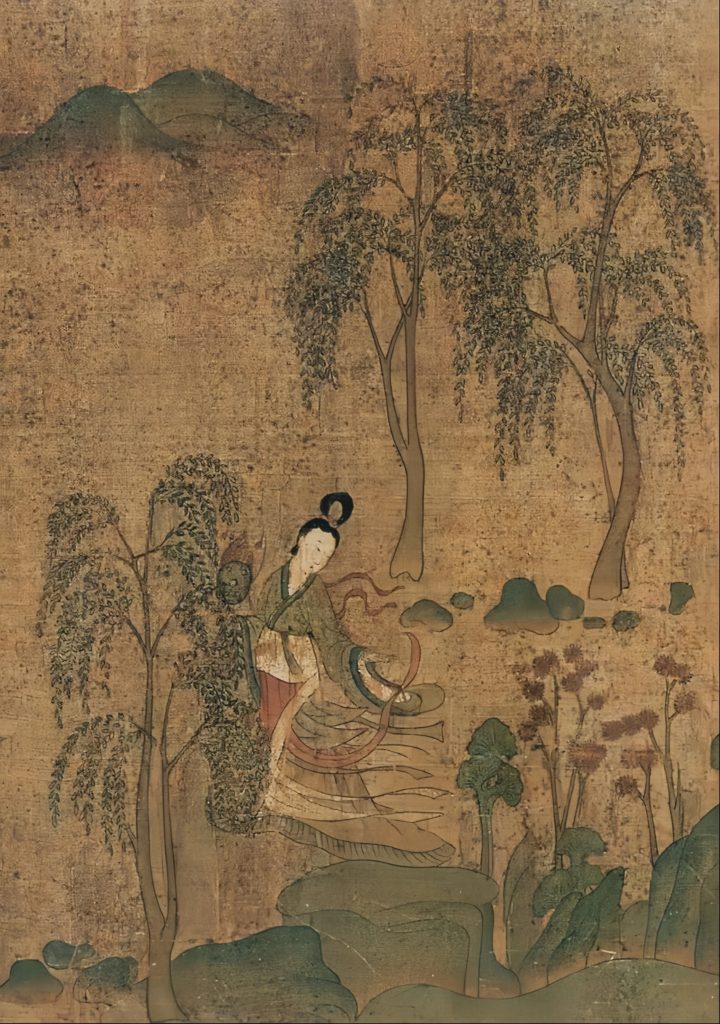
“Their long robes are adorned with patterned sashes, wide sleeves flowing with grace.”
“Clouds reflect the elegance of their garments, blossoms mirror their beauty.”
“Silken robes sway in the spring breeze, jade-carved belts gleam in the sun.”
“Threads weave autumn geese beyond the clouds, dyes capture the hues of southern waters.”
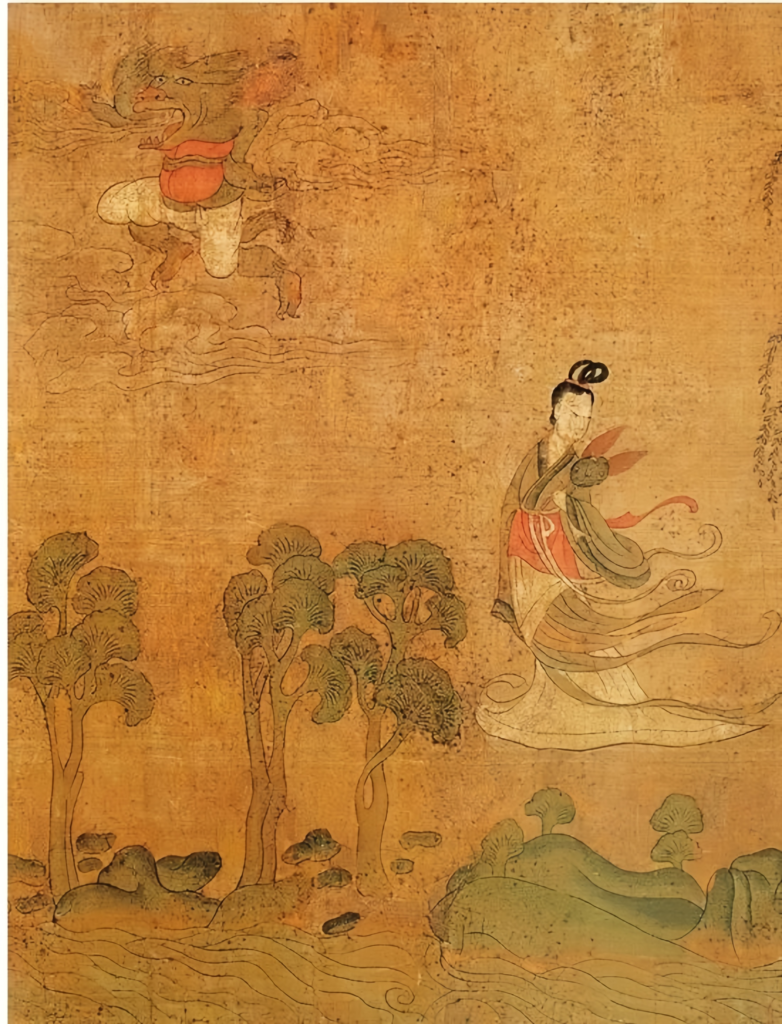
Jin Dynasty: Effortless Elegance
Jin-style Hanfu embodies natural grace, as seen in Gu Kaizhi’s paintings with flowing skirts and ribbons. The ru blouse, often with a yaolan waist panel, paired with poqun pleated skirts, creates a slimming, ethereal look. Half-sleeve ru designs added a trendy twist, showcasing Hanfu fashion’s early versatility. Muted colors like soft greens defined Jin’s understated Chinese cultural fashion.
The signature piece of this era was the ru (襦), a type of blouse with a distinctive yaolan (腰襕)—a fabric panel sewn at the waist. Aside from the long-sleeved ru, a more stylish option was the half-sleeve ru, which was considered fashionable at the time. Paired with these tops were poqun (破裙), a type of pleated skirt made of several sewn-together fabric panels. This design not only flattered the figure but also provided a slimming effect—ideal for those seeking an elegant yet comfortable look.
The flowing elegance of Jin Dynasty Hanfu echoes the iconic Warring States robe, a testament to ancient China’s sartorial artistry.
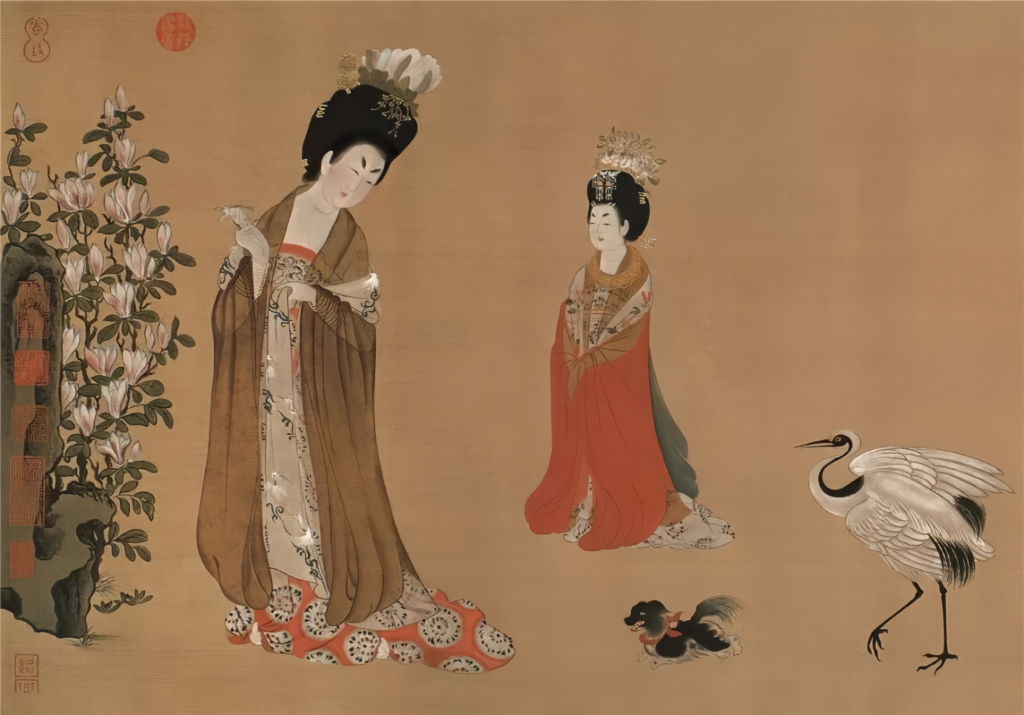
Tang Dynasty: Bold and Ethereal
The Tang Dynasty was an era of openness and diversity, and the boldness of women’s fashion reflected that. Take a look at “Court Ladies Adorning Their Hair with Flowers,” a famous painting by Zhou Fang. The aristocratic women depicted wear revealing yet refined outfits, such as low-cut blouses and sleeveless jackets.
The most iconic Tang Hanfu style? The Qi-Xiong Ruqun (齐胸襦裙). This high-waisted, floor-length dress drapes elegantly, its hem sweeping the ground, as described in poetry: “When seated, my belt brushes against slender grass; when walking, my skirt sweeps fallen plum blossoms.” The long skirts, combined with fitted short blouses (narrow-sleeved shirts), created an ethereal, dreamlike effect. This high-waisted style was also incredibly forgiving, making it a flattering choice for many body types.
Song-style Hanfu retained elements from the Tang dynasty but leaned towards a more subtle and refined aesthetic. This shift was influenced by the turbulent political climate, frequent conflicts, and changes in societal values.
Song-era women’s clothing typically consisted of long tunics paired with skirts. The overall silhouette was slender and elongated, emphasizing a clean and elegant look. Color choices also became more muted—soft blues, pale yellows, and whites dominated Song fashion, reflecting a preference for understated beauty over flamboyance.
There’s a saying among Hanfu enthusiasts: “We start with Qi-Xiong Ruqun but stay loyal to Ming-style Hanfu.” And for good reason—the Ming dynasty took grace and sophistication to the next level.
Women in this period often wore pi-feng (披风, cloaks) or bi-jia (比甲, sleeveless vests) over long tunics and horse-face skirts (马面裙). The structure of horse-face skirts is quite distinct: they have smooth front and back panels, with pleats on the sides. This design created a structured yet flowing appearance, making it one of the most beloved styles even today.

Song Dynasty: Subtle Refinement
Song Hanfu favors simplicity, with long tunics and slender skirts in pale blues and whites. Reflecting a reserved era, its clean silhouette emphasizes elegance over flashiness. This understated Hanfu fashion appeals to those seeking minimalist Chinese cultural fashion, offering a serene contrast to Tang’s vibrancy.
Each dynasty also had its own signature color palettes:
- Jin dynasty favored muted, low-saturation colors.
- Tang dynasty embraced bold and vibrant hues like deep red, purple, golden yellow, and emerald green.
- Song dynasty leaned towards soft, serene tones like light blue, pale yellow, and white.
- Ming dynasty loved rich, dramatic colors such as crimson, grass green, royal blue, and violet.

Modern Hanfu: Tradition Meets Today
For a long time, Hanfu faded into history, but with the revival of Chinese cultural pride, more people are embracing it again. In addition to historically accurate replicas, many brands now offer modernized Hanfu, blending tradition with contemporary practicality.
Walking into a Hanfu boutique today is an overwhelming experience—hundreds of designs, each more intricate than the last. Gold-threaded embroidery, delicate floral patterns, luxurious silk, and flowing silhouettes transport you to another era.
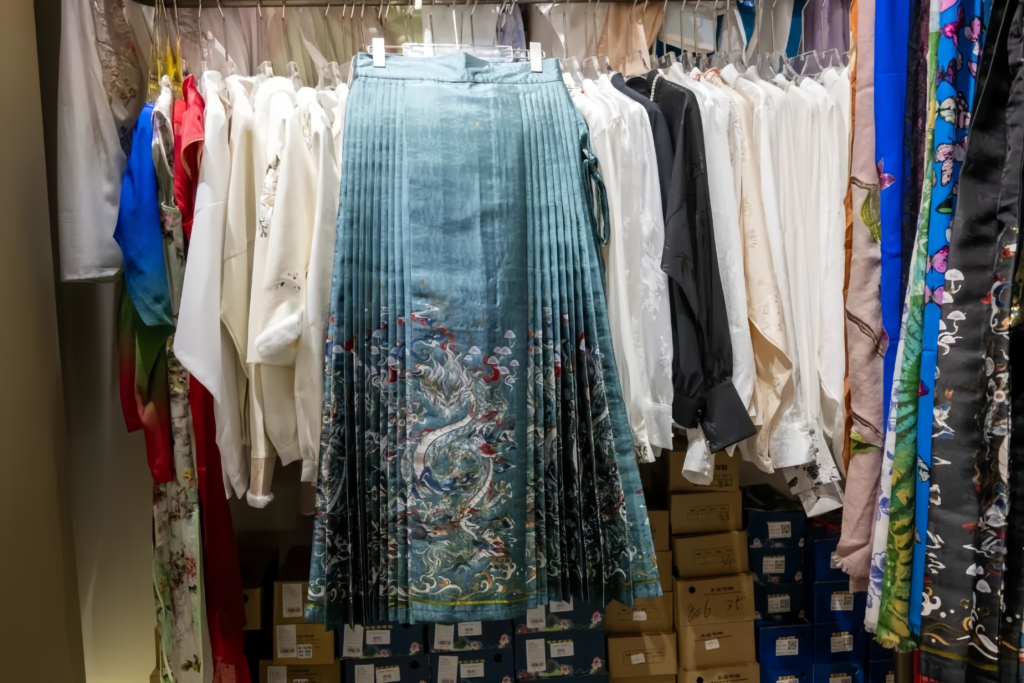
Hanfu Accessories: The Icing on the Cake

No Hanfu look is complete without the right accessories:
- Hair ornaments: Whether it’s a delicate hairpin, a bejeweled hair crown, or a swaying buyao (步摇), the right piece instantly elevates the elegance of Hanfu styling.
- Round fans: A staple accessory for centuries, round fans add a touch of classical charm and make for perfect photos.
- Bags & purses: Instead of modern handbags, opt for a traditional-style pouch or embroidered purse for a seamless look.
- Oil-paper umbrellas: These vintage-style umbrellas are not just practical but also add a poetic, nostalgic touch to any Hanfu outfit.
Hanfu Accessories: Perfecting the Look
Accessories elevate Hanfu style:
- Umbrellas: Oil-paper designs bring poetic charm.Learn more at China Culture (DoFollow link) for styling tips.
- Hairpins: Bejeweled buyao or simple crowns add elegance.
- Fans: Round fans enhance classic Hanfu aesthetics.
- Purses: Embroidered pouches keep the look cohesive.



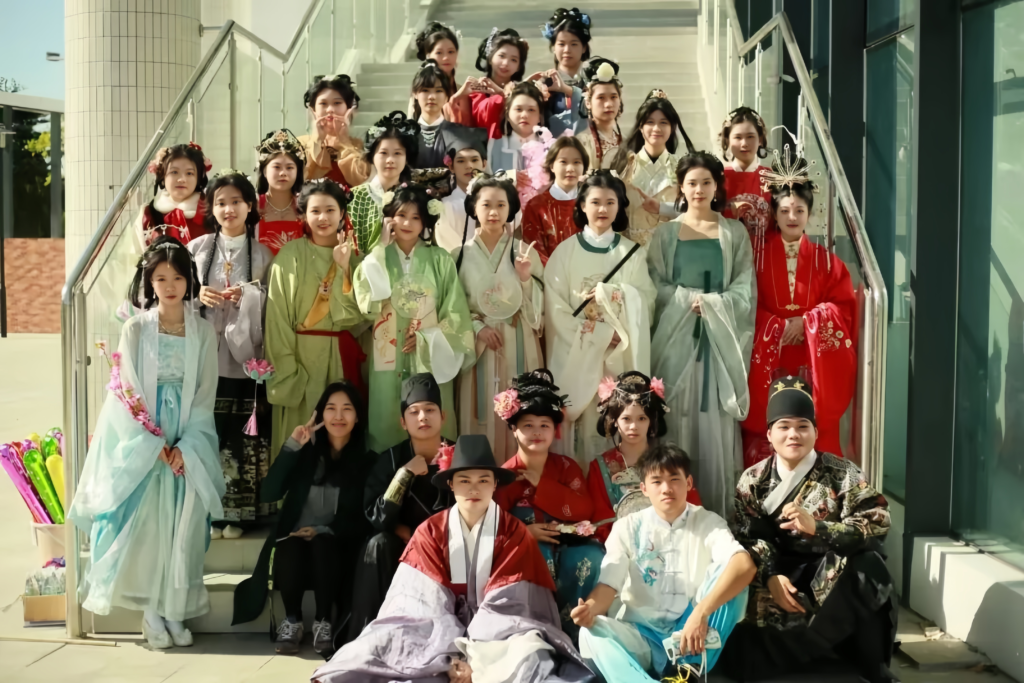

Responses